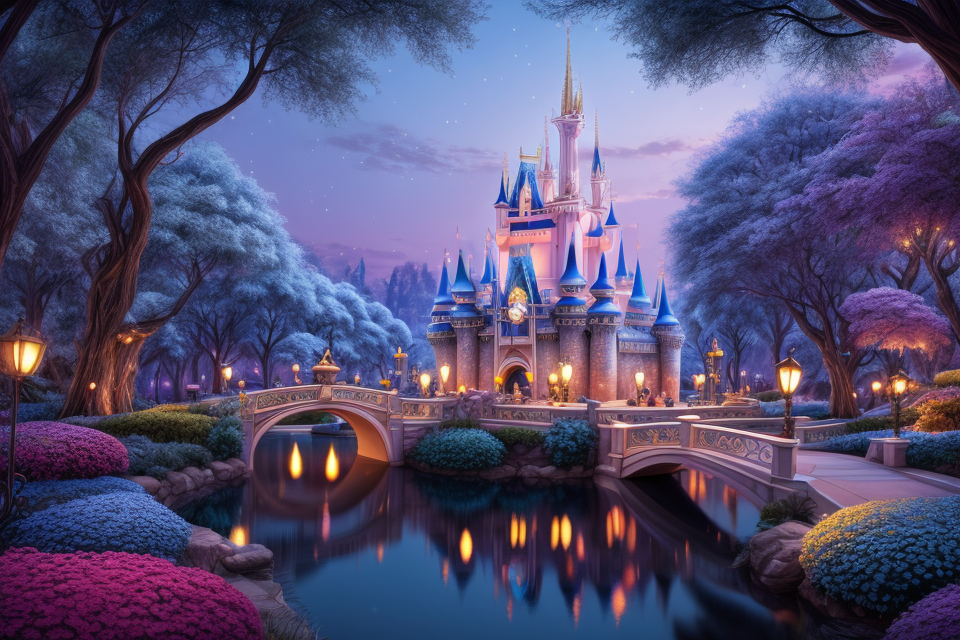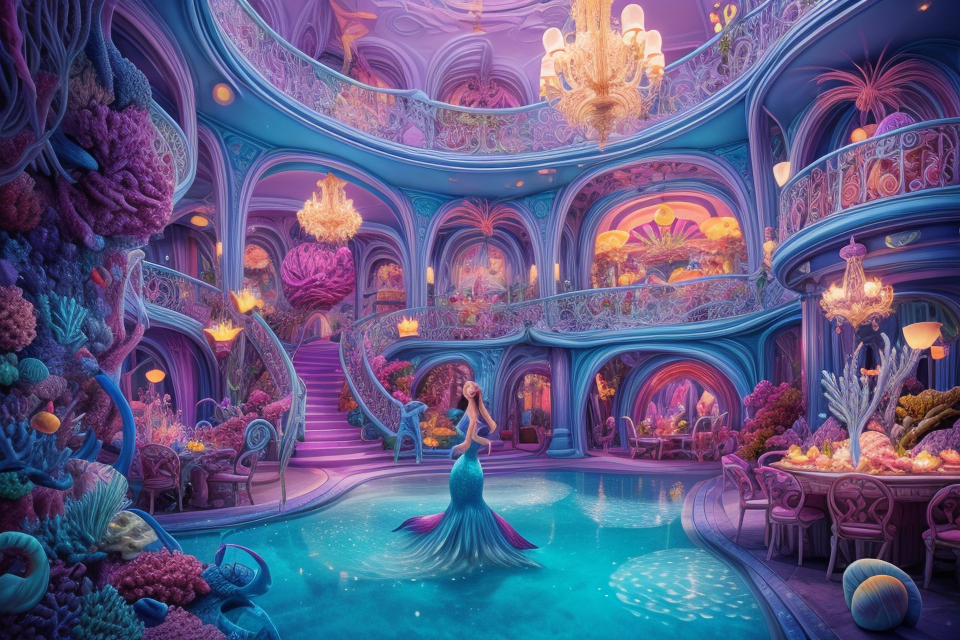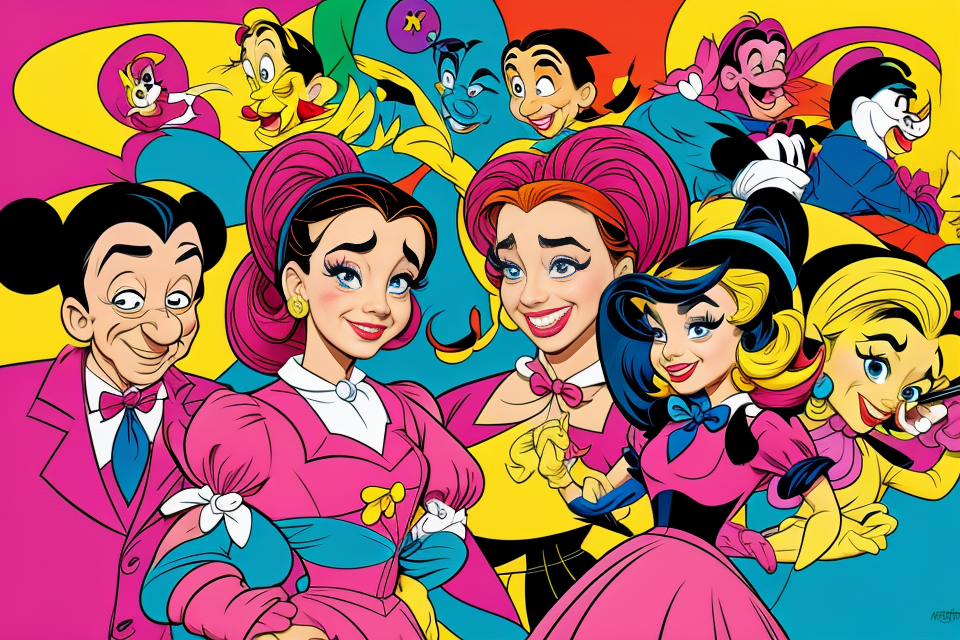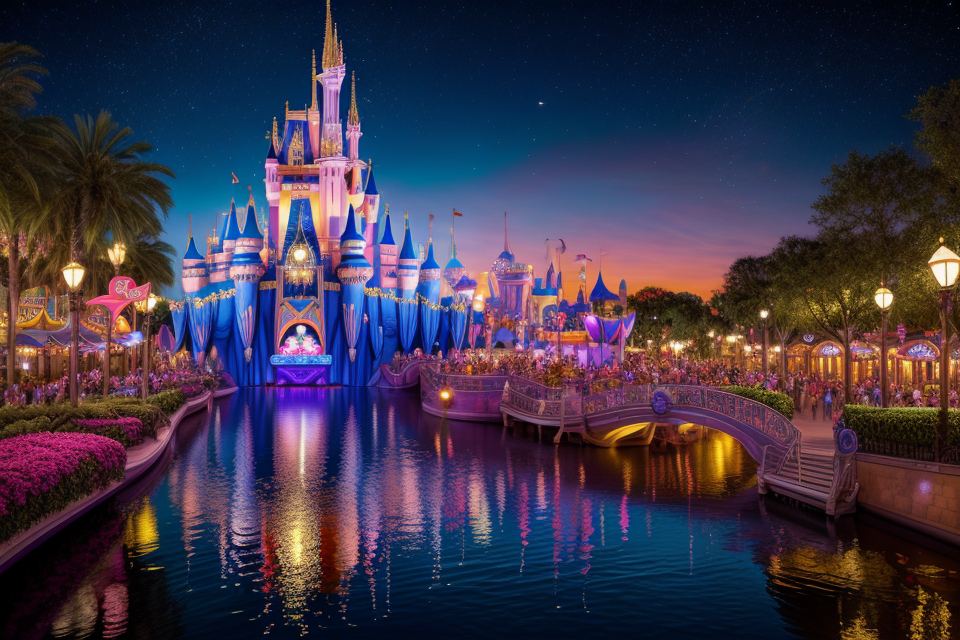
Welcome to the enchanting world of Disney, where imagination meets artistry. One of the most recognizable and beloved animation studios in the world, Disney has a signature art style that has captured the hearts of audiences for generations. But what exactly is this art style called? In this article, we will explore the fascinating world of Disney’s unique art style and discover what makes it so captivating. So, come along and join us on this magical journey into the world of Disney!
What is Disney’s Art Style Called?
The Evolution of Disney’s Art Style
Disney’s art style has evolved significantly over the years, reflecting changes in technology, cultural influences, and artistic trends. This evolution can be broadly divided into three distinct periods: the Golden Age of Disney Animation, the Disney Renaissance, and modern Disney animation.
The Golden Age of Disney Animation
The Golden Age of Disney Animation refers to the period between 1937 and 1960, during which Walt Disney Productions created some of the most iconic animated films of all time. The art style during this period was characterized by a distinctive graphic quality, with bold outlines, vibrant colors, and highly stylized characters. Animators such as Fred Moore, Eric Larson, and Frank Thomas developed a distinctive animation style that emphasized the personality and expressiveness of the characters. The backgrounds during this period were often simplistic and decorative, with a focus on creating a cohesive visual style that would enhance the storytelling.
The Disney Renaissance
The Disney Renaissance refers to the period between 1989 and 1999, during which Disney released a series of critically acclaimed and commercially successful animated films. The art style during this period was characterized by a more realistic and detailed approach, with a focus on creating lifelike characters and environments. Animators such as Glen Keane, Andreas Deja, and Bruce Feirstein developed a more nuanced and sophisticated animation style that emphasized the emotional depth and complexity of the characters. The backgrounds during this period were more detailed and textured, with a focus on creating immersive worlds that would transport the viewer into the story.
Modern Disney Animation
Modern Disney Animation refers to the period following the Disney Renaissance, which has seen a continued evolution of the art style. The art style during this period is characterized by a more experimental and diverse approach, with a focus on incorporating new technologies and artistic trends. Animators such as John Lasseter, Walt Disney Animation Studios’ chief creative officer, have encouraged a more collaborative and innovative approach to animation, with a focus on pushing the boundaries of what is possible. The backgrounds during this period are often more complex and dynamic, with a focus on creating richly detailed and immersive worlds that incorporate elements of both traditional and digital art.
Overall, the evolution of Disney’s art style reflects the studio’s ongoing commitment to innovation and experimentation, while remaining true to the core values of storytelling, emotion, and imagination that have defined its legacy.
Characteristics of Disney’s Art Style
Disney’s art style is a distinctive and captivating form of animation that has enchanted audiences for generations. The characteristics of this art style are evident in every Disney film, television show, and theme park attraction, making it one of the most recognizable and beloved art styles in the world.
Storytelling through Animation
One of the key characteristics of Disney’s art style is its use of animation to tell a story. From the earliest Disney films, such as Snow White and the Seven Dwarfs and Pinocchio, to more recent classics like Frozen and Moana, Disney animators use a combination of drawing, painting, and computer-generated imagery to bring characters and settings to life. This allows for a level of storytelling that would be impossible with live-action filmmaking, and enables Disney to create a world of fantasy and wonder that captivates audiences of all ages.
Stylized Characters and Backgrounds
Another defining characteristic of Disney’s art style is its use of stylized characters and backgrounds. Disney animators carefully design each character and environment to fit within the larger world of the film, creating a cohesive and visually appealing aesthetic. Characters are often exaggerated and caricatured to emphasize their personalities and emotions, while backgrounds are filled with detail and color to create a sense of depth and atmosphere. This stylization allows Disney films to stand out from other forms of animation and gives them a unique and recognizable look.
Attention to Detail
Finally, Disney’s art style is characterized by an incredible attention to detail. From the intricate costumes and hairstyles of the characters to the richly-detailed backgrounds and landscapes, every aspect of a Disney film is designed to be as visually appealing and immersive as possible. This attention to detail extends to every aspect of the production process, from the storyboarding and animation to the sound design and music. It is this level of care and craftsmanship that has made Disney’s art style so beloved by audiences around the world.
The Influence of Disney’s Art Style
Disney’s Impact on Animation
Disney’s impact on animation is immeasurable. From pioneering techniques and technologies to shaping the entire animation industry, Disney’s influence can be seen in every aspect of animation today.
Pioneering Techniques and Technologies
Walt Disney was a pioneer in the animation industry, constantly pushing the boundaries of what was possible. He was one of the first to use synchronized sound in animation, which revolutionized the way movies were made. Disney also introduced the concept of limited animation, which allowed for more cost-effective production while still maintaining a high level of quality. Additionally, Disney was one of the first to use the multiplane camera, which allowed for more complex and dynamic camera movements.
Shaping the Animation Industry
Disney’s impact on the animation industry goes beyond just technical innovations. The company’s focus on storytelling and character development has influenced countless animators and filmmakers. Disney’s animation style is known for its attention to detail, with characters that are expressive and full of personality. This style has become synonymous with animation itself, and many studios have emulated Disney’s approach in their own productions.
Disney’s influence on animation can also be seen in the way the company has helped to popularize the medium. Many of Disney’s films have become cultural touchstones, and the company’s animated characters have become iconic figures in popular culture. This has helped to raise the profile of animation as a whole, leading to greater recognition and respect for the art form.
Overall, Disney’s impact on animation is undeniable. The company’s pioneering techniques and technologies, as well as its focus on storytelling and character development, have had a profound influence on the animation industry. Disney’s animation style has become a benchmark for quality and has helped to popularize the medium, making it a beloved part of popular culture.
Disney’s Impact on Pop Culture
Disney’s art style has had a profound impact on pop culture, shaping the way we think about and consume media.
Cultural Icons and Symbols
Disney has created numerous cultural icons and symbols that have become synonymous with popular culture. From Mickey Mouse and Donald Duck to Cinderella and Snow White, these characters have transcended the boundaries of their original stories and become beloved figures around the world. They have been featured in countless books, movies, and TV shows, and have even inspired real-life fashion trends.
Inspiring Creativity and Imagination
Disney’s art style has also inspired creativity and imagination in countless individuals. From children who dream of becoming animators and filmmakers to adults who are fascinated by the intricate details of Disney’s world-building, the company’s signature style has captured the hearts and minds of people of all ages. It has sparked a love of storytelling and a desire to create something magical and unforgettable.
Through its films, TV shows, and theme parks, Disney has created a world that is both enchanting and accessible, inviting people to step into a realm of fantasy and wonder. Its art style has helped to bring these worlds to life, creating a sense of awe and magic that has become synonymous with the Disney brand.
In addition to its direct impact on pop culture, Disney’s art style has also influenced other forms of media, from children’s literature to video games. It has inspired countless artists and creators to push the boundaries of their own work and to dream big when it comes to world-building and storytelling.
Overall, Disney’s art style has had a profound impact on pop culture, shaping the way we think about and consume media. It has inspired creativity and imagination, created cultural icons and symbols, and invited us to step into a world of fantasy and wonder.
The Legacy of Disney’s Art Style
The Timeless Appeal of Disney Animation
Disney animation has a timeless appeal that has endured for decades, captivating audiences of all ages with its magical storytelling and enchanting visuals. This timeless appeal can be attributed to several factors, including the use of vibrant colors, memorable characters, and innovative animation techniques.
- Enduring Popularity and Relevance
Despite the advancements in technology and the emergence of new animation styles, Disney animation continues to remain relevant and popular. This is evident in the continued success of classic films such as Snow White, Cinderella, and The Lion King, which continue to be re-released in theaters and enjoyed by new generations of fans.
- The Magic of Disney
One of the key factors contributing to the timeless appeal of Disney animation is the magic that permeates every aspect of the films. From the whimsical settings and fantastical creatures to the touching storylines and memorable songs, Disney animation transports viewers to a world of wonder and enchantment that never grows old.
Another important aspect of the timeless appeal of Disney animation is the universal themes and messages that are woven throughout the films. Whether it’s the importance of friendship and loyalty in The Lion King, the power of dreams and perseverance in The Little Mermaid, or the enduring love of a parent in Beauty and the Beast, Disney animation touches the hearts of audiences of all ages and resonates with them on a deep emotional level.
In addition to its timeless appeal, Disney animation has also played a significant role in shaping popular culture and influencing the animation industry as a whole. The iconic characters and memorable songs from Disney films have become ingrained in the cultural consciousness, with many generations growing up with these beloved characters and their stories. The innovative animation techniques and storytelling techniques used in Disney animation have also inspired countless animators and filmmakers, making a lasting impact on the industry as a whole.
Overall, the timeless appeal of Disney animation is a testament to the power of imagination, the importance of storytelling, and the enduring magic of Disney’s signature art style.
The Future of Disney’s Art Style
Disney’s art style has come a long way since the company’s inception, and its future looks bright with plans for continuing innovation and evolution. As technology and media continue to advance, Disney’s art style will undoubtedly adapt and evolve to meet the changing needs and preferences of audiences.
Continuing Innovation and Evolution
Disney’s art style has always been known for its innovative and evolving nature, and this trend is set to continue in the future. The company’s artists and animators are constantly pushing the boundaries of what is possible, experimenting with new techniques and technologies to create ever more captivating and immersive experiences for audiences. From groundbreaking computer-generated imagery (CGI) to virtual reality (VR) experiences, Disney’s art style is poised to continue to lead the way in the world of animation and visual storytelling.
Adapting to New Technologies and Media
As new technologies and media platforms emerge, Disney’s art style will need to adapt to remain relevant and engaging. This means embracing new tools and techniques, as well as exploring new forms of storytelling and expression. For example, the rise of mobile devices and streaming services has led to an increased demand for short-form content and interactive experiences, which Disney is already beginning to explore through its various franchises and properties.
Overall, the future of Disney’s art style looks bright, with a continued focus on innovation, evolution, and adaptation to new technologies and media. Whether through traditional animation or cutting-edge technology, Disney’s artists and animators will continue to enchant and captivate audiences around the world with their unique and magical artistic vision.
FAQs
1. What is Disney’s signature art style called?
Disney’s signature art style is called “Disney Animated” or “Disney House Style”. It is a distinctive visual style that has been used in Disney’s animated films since the 1930s.
2. What are the characteristics of Disney’s signature art style?
The Disney Animated style is characterized by its vibrant colors, clean lines, and stylized character designs. The characters are often exaggerated and simplified, with emphasis on their expressions and emotions. The backgrounds are usually richly detailed and full of imagination, often featuring intricate patterns and textures.
3. How did Disney’s signature art style develop over time?
Disney’s signature art style evolved over time as technology advanced and new artists joined the studio. In the early days, Disney’s animators were influenced by the Art Deco style, which is reflected in the clean lines and bold colors of the characters. Over time, the style became more stylized and exaggerated, with an emphasis on personality and emotion.
4. How has Disney’s signature art style influenced popular culture?
Disney’s signature art style has had a profound influence on popular culture. The Disney characters have become iconic symbols of childhood and are beloved by people of all ages around the world. The style has also influenced other forms of animation and entertainment, inspiring generations of artists and storytellers.
5. Is Disney’s signature art style used in live-action films?
Disney’s signature art style is primarily associated with their animated films, but the studio has also used similar visual styles in their live-action films. For example, the costumes and sets in Disney’s live-action adaptations of their classic animated films often reflect the same attention to detail and imagination as the animated films. Additionally, Disney’s theme parks and other immersive experiences often incorporate elements of the signature art style to create a magical and immersive environment for visitors.


